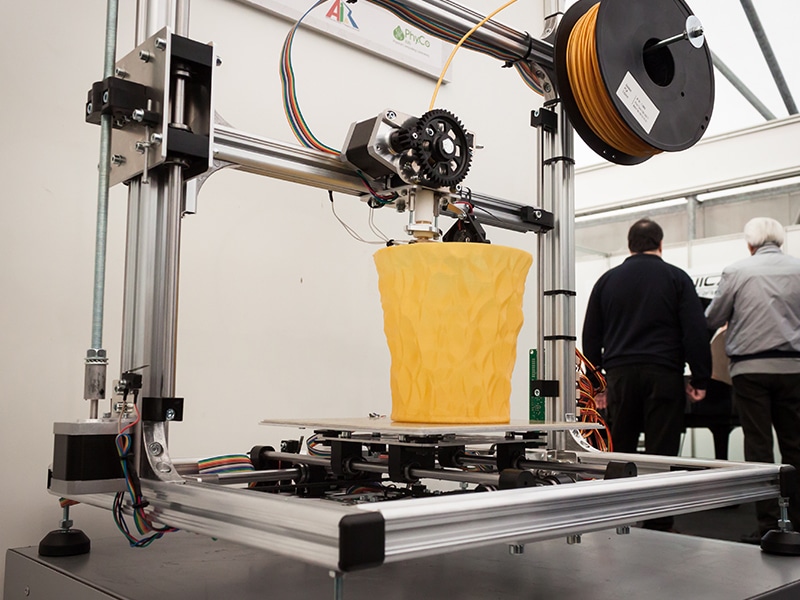An industry tax system designed around intellectual property as well as the ‘old manufacturing’ assets of plant and machinery is needed if Australia is to attracting and maintain advanced manufacturing, the Australian Advanced Manufacturing Council (AAMC) says.
To this end, the AAMC — a private sector initiative pursuing Australian success in advanced manufacturing — is calling on the Productivity Commission to undertake a comprehensive analysis of Australia’s global competitiveness in this industry sector.
The AAMC is also calling for a tax system that encourages investment in new plant and equipment.
Responding to the recent Federal Government tax review, AAMC chairman John Pollaers says Australia’s tax regime “needs to attract and encourage advanced industries, rather than act as a disincentive for the establishment and maintenance of these industries”.
“Advanced manufacturing relies on intellectual property (IP) as its key asset and yet the tax system is still designed around the assets of old manufacturing — plant and machinery,” he says.
“In our estimation, a significant amount of tax revenue is being lost through IP that is developed by Australian individuals and companies moving offshore. These are IP investments that could very easily have been located here.”
Pollaers says it is important to know exactly where Australia stands in comparison to the world, in terms of encouraging and maintaining new investments in knowledge-rich industries.
“The key driver for both growth and productivity in the manufacturing sector is innovation,” he says. “The Productivity Commission therefore needs to look closely at all the elements of the innovation ‘ecosystem’ and understand how Australia compares to the rest of the world — and what must be adjusted to provide us with comparative advantages.
“Global competition for IP is robust, to say the least,” Pollaers adds.
In its submission, the AAMC asserts that Australia is comparatively unattractive in terms of research and development (R&D) tax concessions and innovation incentives, and lags behind several of our Asian neighbours who are aggressively expanding in the field — namely, Japan, New Zealand, Singapore and South Korea.
“The moment we accept that IP ownership and licensing control of our best research efforts is expendable, we lose the most valuable aspect of our creations,” the submission says. “We lose jobs and business opportunities for suppliers. We also create the perfect conditions for tax leakage.
“Policies must provide strong impetus for business R&D, particularly collaborative R&D, to bring the best of the national innovation system together to address productivity challenges.”
Among the AAMC recommendations are:
- Encourage industry-research collaboration through tax reform. “In order to effect a step change in collaboration between business and publicly funded researchers, double the R&D tax incentive for R&D done in collaboration with an approved Australian Research Institute or university.”
- Support mechanisms that encourage more R&D. “Immediately remove the $100 million cap on the R&D expenditures that companies can claim as tax deductions, and immediately withdraw proposals to reduce R&D tax offsets.”
- Stem the loss of Australian innovation and IP overseas. “Introduce an Innovation incentive scheme to attract and maintain high value manufacturing in Australia. This innovation incentive would effectively provide a reduced corporate tax rate on incremental income from qualifying activities. Applicants would be required to submit plans for substantive commitments in manufacturing or for expanding knowledge-rich activities or capabilities in Australia.”
- Follow international accounting practice for IP tax treatment. “Recognise IP as a depreciable asset, whether it is developed internally or acquired. Include goodwill and trademarks in these definitions. Adopt international accounting practice and allow IP amortisation expenses for tax purposes.”
- Encourage investment in new plant and equipment. “Expand the application of Federal Government rules of accelerated depreciation. Give a taxpayer the option of claiming accelerated allowances as an alternative form of tax depreciation by allowing all plant and machinery, except motorcycles, cars and light goods vehicles (weighing 3 tonnes or less), to be written off at 33.3 per cent over three years, and granting a 100 per cent accelerated depreciation allowance in the first year for capital expenditure incurred on the following:
- The purchase of selected new machines, equipment or systems that demonstrably improve productivity and efficiency than similar ones currently used;
- The installation of engineering control measures for existing machines, equipment or processes, with the primary objective to improve productivity and efficiency;
- The purchase of selected new equipment or systems that do not pose a significant chemical or environmental risk;
- The installation of engineering control measures for existing machines, equipment or processes to minimise chemical and environmental risk;
- Certified energy saving or energy efficient equipment;
- Efficient pollution control equipment or device; and
- Computers, robots, computer-aided machines and most other electronic equipment.”


